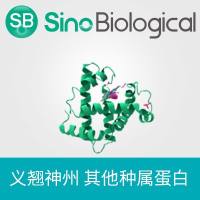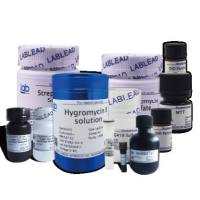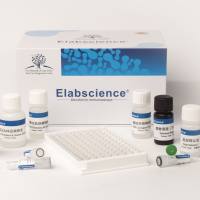Green lab protocol for vacuum infiltration transformation of Arabidopsis
互联网
Green lab protocol for vacuum infiltration transformation of Arabidopsis
Step by step picture demonstration
This protocol is adapted from protocols by Nicole Bechtold (Bechtold et al. 1993),
Andrew Bent (Bent et al. 1994) and Takashi Araki. No claims are made that any of the steps
are necessary or ideal; these experiments have not been done. However, this protocol gives us
very good results, with at least 95% of all infiltrated plants giving rise to transformants,
and a transformant rate of 1-4% of seed.
1. Sow seeds of ecotype Columbia in lightweight plastic pots prepared in the
following way: mound Arabidopsis soil mixture into pots (We use 3 1/2 inch
to 4 inch square pots), saturate soil with Arabidopsis fertilizer , add more soil
so that it is rounded about 0.5 to 1 inch above the top, dust with fine
vermiculite, cover soil with a square of window screen mesh (Circle Glass
Co., Detroit, MI) and secure mesh with a rubber band.
2. Grow plants under conditions of 16 hours light/ 8 hours dark at 20 °C to
22 °C, fertilizing from below with Arabidopsis fertilizer once a week , adding
approximately 0.5" to each flat. Thin the plants to one per square inch or
fewer per pot. After 4-6 weeks, depending on your conditions, plants will be
ready to infiltrate when they are at this stage: the primary inflorescence is
5-15 cm tall and the secondary inflorescences are appearing at the rosette.
No clipping of bolts is necessary before infiltration.
3. In the meantime, transform your construct into Agrobacterium tumefaciens
strain GV3101 (C58C1 Rifr) pMP90 (Gmr) (Koncz and Schell 1986 ). When plants
are ready to transform, inoculate a 500 ml culture of YEP medium containing
50 mg/l rifampicin, 25 mg/l gentamycin and the appropriate antibiotic for your
construct with a 1 ml overnight starter culture. Be sure to water your plants
well the day before infiltration so that the stomata will be open that day.
4. Grow culture overnight at 28 °C with shaking, until culture OD600 is > 2.0.
Spin down the culture and resuspend it in 1 liter of infiltration medium.
Infiltration medium (l liter)
2.2 g MS salts
1X B5 vitamins
50 g sucrose
0.5 g MES
pH to 5.7 with KOH
0.044 µM benzylaminopurine (be sure the final concentration is micro molar).
200 µl Silwet L-77 ( OSi Specialties request that purchases be
made at Lehle Seeds, fax # (512) 388-3974
catalog # vis-01)
5. Place resuspended culture in a Rubbermaid container inside a vacuum
desiccator. Invert pots containing plants to be infiltrated into the solution so
that the entire plant is covered, including rosette, but not too much of the soil
is submerged. One good way to do this is to place the corners of the pots
on rubber stoppers sitting in the culture. Make sure no large bubbles are
trapped under the plant.
6. Draw a vacuum of 400 mm Hg (about 17 inches). Once this level has
been obtained, close the suction (i.e., so that the vacuum chamber is still
under 17 inches of mercury but the vacuum is not still being directly
pulled) and let the plants stay under vacuum for five minutes. Quickly
release the vacuum. Briefly drain the pots, place them on their sides in a
tray, cover the tray with plastic wrap to maintain humidity, and place the
flats back in a growth chamber. The next day, uncover the pots and set
them upright. Keep plants infiltrated with different constructs in separate
trays from this stage on.
7. Allow plants to grow under the same conditions as before (see step 2).
Stake plants individually as the bolts grow. The leaves that were infiltrated
will degenerate, but plants continue growing until they finish flowering.
Gradually reduce water and then stop watering to let them dry out.
Harvest seeds from each plant individually.
8. Prepare large selection plates: 4.3 g/l MS salts
1X B5 vitamins (optional)
1% sucrose
0.5 g/l MES
pH to 5.7 with KOH
0.8% phytagar
Autoclave.
Add antibiotics (30 g/ml works well for kanamycin).
Pour into 150 X 15 mm plates.
We also add vancomycin at 500mg/l to control bacterial growth.
9. Dry plates well in the sterile hood before plating. Twenty minutes to half an
hour with the lids open is usually sufficient.
10. For each plant sterilize up to 100 µl of seeds (approximately 2500 seeds) and
plate out individually. Sterilize seeds (7 minutes rocking in 50%
bleach/0.02% Triton X-100, 3 rinses in sterile distilled water). Resuspend
seeds in approximately 8 ml sterile 0.1% agarose and pour onto large
selection plates as if plating phage. Tilt plate so seeds are evenly distributed,
and let sit 10-15 minutes. After a while the liquid should soak into the
medium; if evaporation is too slow, open the plate in the hood and let dry until
the excess liquid is gone. Seal plates with Parafilm or paper surgical tape
and place in a growth room.
11. After 5 to 7 days, transformants will be visible as green plants. Transfer
these onto "hard selection" plates (100 x 20 mm plates with same recipe as
selection plates but with 1.5% phytagar) this allows roots to elongate and
eliminates any false positives. Place in growth room.
12. After 6-10 days, plants will have at least one set of true leaves. Transfer
normal conditions. Keep covered for several days. Note: We usually move
just one transformant to soil from any one plant that was infiltrated, to ensure
independent transformants.
References:
- Bechtold N, Ellis J, Pelletier G (1993) C. R. Acad. Sci. Paris 316:1194-1199
- Bent A, Kunkel BN, Dahlbeck D, Brown KL, Schmidt R, Giraudat J, Leung J,
- Staskawicz BJ (1994) Science 265:1856-1860
- Koncz C, Schell J (1986) Mol. Gen. Genet. 204:383-396
Solutions
YEP medium (1 liter)
10 g Bacto peptone
10 g yeast extract
5 g NaCl
1000 mg myo-inositol
100 mg thiamine-HCl
10 mg nicotinic acid
10 mg pyridoxine-HCl
Dissolve in ddH2O and store at -20oC.
Arabidopsis fertilizer (10 liters)
50 ml 1M KNO3
25 ml 1M KPO4 (pH 5.5)
20 ml 1M MgSO4
20 ml 1M Ca(NO3)2
5 ml 0.1M Fe.EDTA
10 ml micronutrients (see below)
Dissolve in ddH2O and store at room temperature
Arabidopsis micronutrients (500 ml)
70 ml 0.5M boric acid
14 ml 0.5M MnCl2
2.5 ml 1M CuSO4
1 ml 0.5M ZnSO4
1 ml 0.1M NaMoO4
1 ml 5M NaCl
0.05 ml 0.1M CoCl2
Dissolve in ddH2O and store at room temperature
Commonly asked questions about this vacuum infiltration method:
Q. Why add vancomycin to the seed selection medium?
A. We find it decreases Agrobacterium growth that may occur as the seedlings germinate.
Although the seed coat is surface sterilized, in our experience some seeds may contain
Agrobacterium inside the seed coat.
We have found an inexpensive source of vancomycin at our university pharmacy. You
may want to check at your pharmacy, indicating it is for research purposes only, and ask
for it in injectable vials.
Q. Why thin plants to just a few per pot?
A. We found that it increased the transformation rate of primary plants to at least 95%. It
also increases the number of seeds generated per plant and it facilitates harvesting
individual plants. We harvest plants individually and choose one transformant per primary
plate to assure that transformants are independent.
Q. If the leaves die shortly after infiltration, is something wrong?
A. No, we always see rapid degeneration of leaves after infiltration. Keep watering and
growing plants until they finish flowering.
Q. What method does the Green lab use to transform Agrobacterium tumefaciens ?
A. We prefer electroporation. Refer to the manual of your electroporation unit for method









